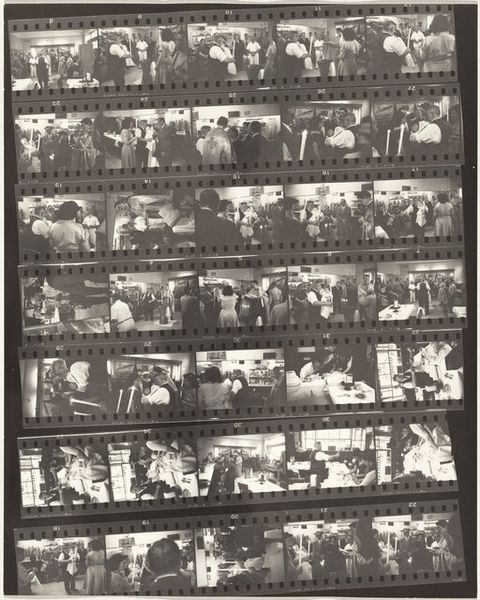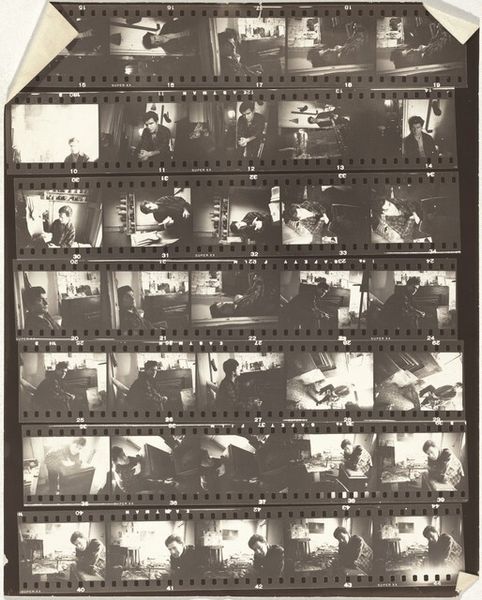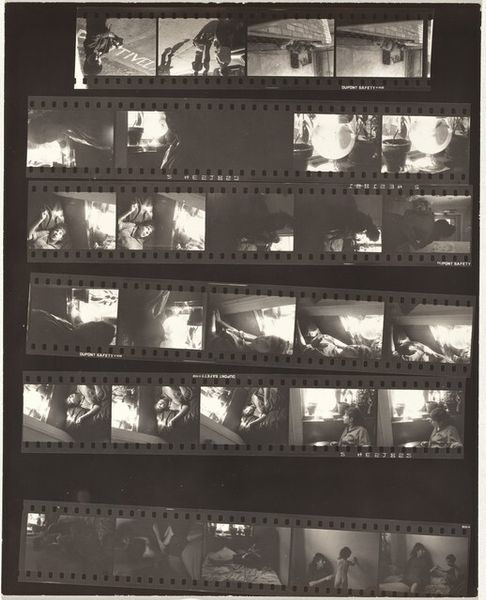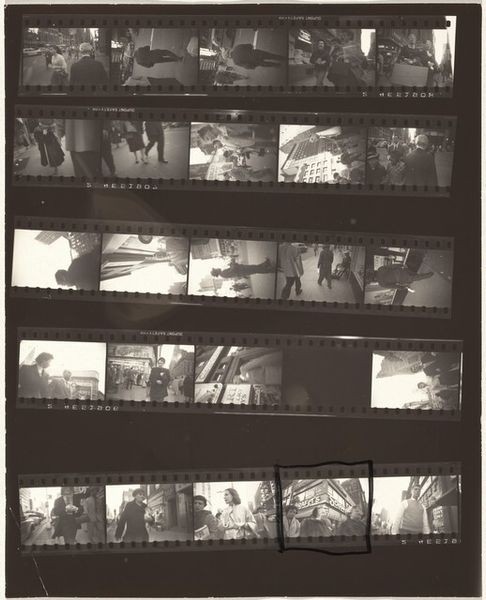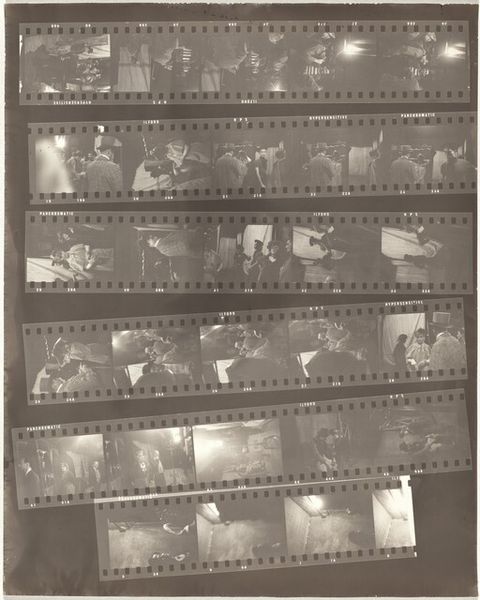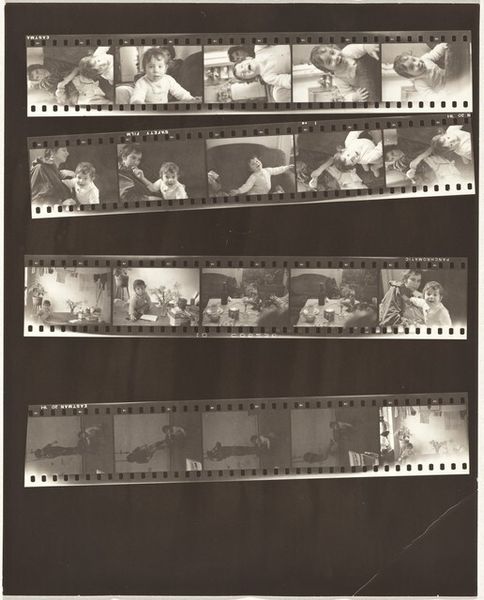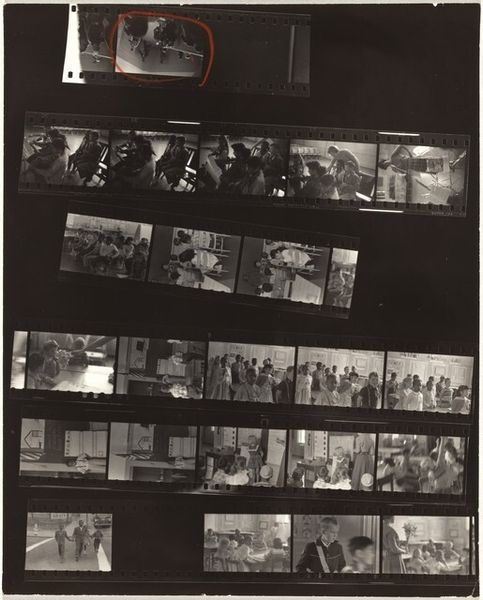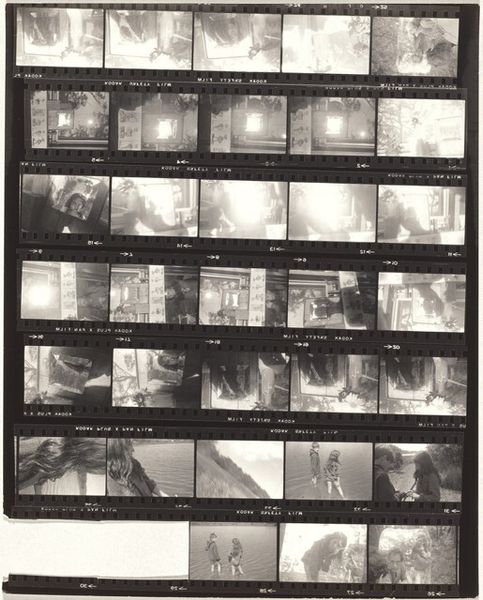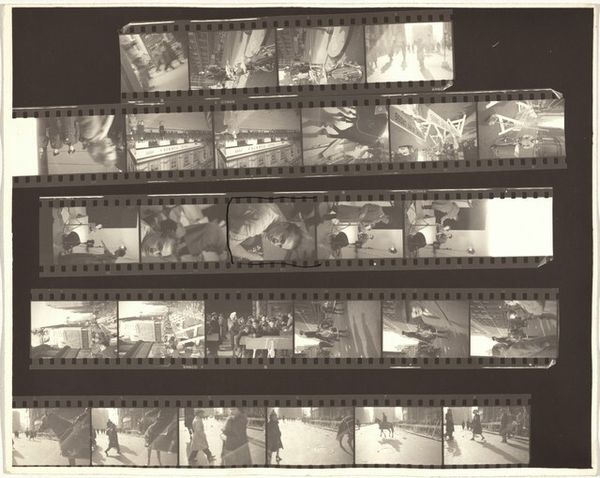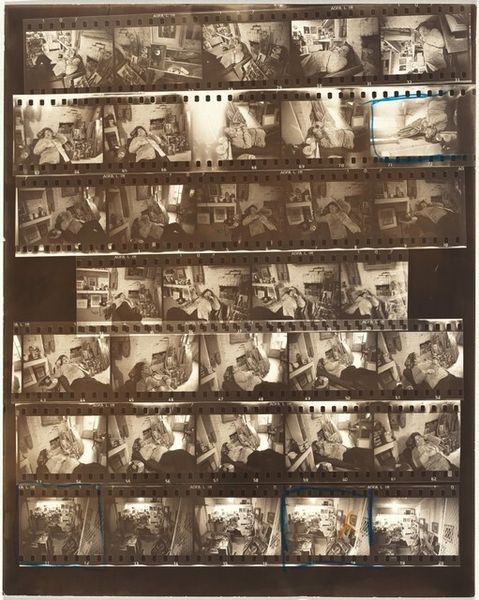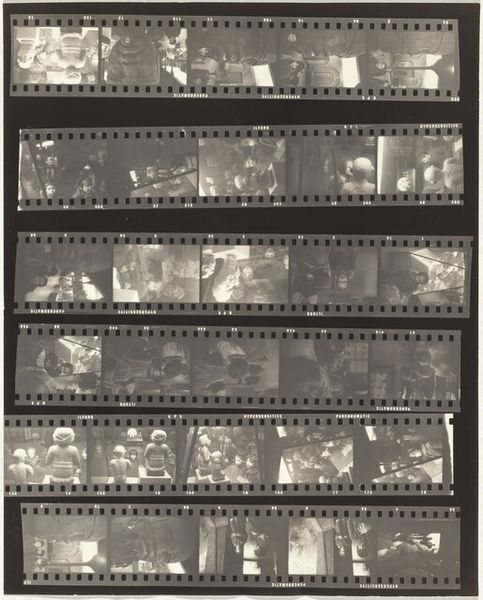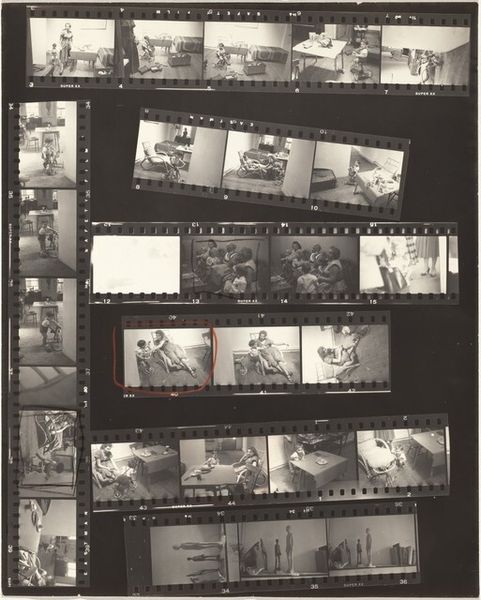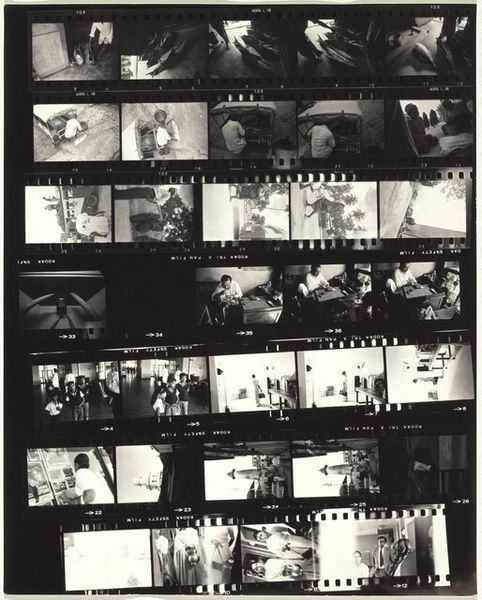
Dimensions: sheet: 25.3 x 20.2 cm (9 15/16 x 7 15/16 in.)
Copyright: National Gallery of Art: CC0 1.0
Curator: Robert Frank’s "Three Penny Opera no number," created around 1957-1958, presents us with a gelatin silver print, resembling a contact sheet or perhaps film strips. What strikes you initially about its formal qualities? Editor: The chaotic composition! It gives the impression of fragmented narratives. The stark contrasts within each frame and the varying levels of exposure create an unsettling mood, mirroring the subversive themes typically associated with the "Three Penny Opera." Curator: Yes, precisely. Notice how Frank utilizes the inherent structure of the film strip—the sequence of images, the sprocket holes—to create rhythm. Each frame becomes a study in light and shadow, almost abstracting the figures within. Observe how this fragmented syntax contributes to the photograph's overall tension. Editor: I agree, the form certainly amplifies thematic elements. Frank often captured social alienation and societal inequalities. This work likely explores similar issues present in Brecht's play – the dark underbelly of capitalism and moral decay, conveyed through these raw, gritty images. Curator: Indeed. Frank's decision to present the images in this film strip format adds another layer. It alludes to the process of creation, unmasking the behind-the-scenes work inherent to stagecraft and to photography. The sequence and framing guides how the subject reads. Editor: Moreover, the presentation could be a commentary on the mechanical nature of image production and its relationship to truth. The repetitive, almost obsessive, documentation suggests an attempt to capture something elusive, some essence of the human condition amid societal pressures. Curator: Perhaps. The brilliance lies in Frank's ability to meld form and content seamlessly. The choice of monochrome is stark. Note, though, it lends the work a timelessness, enhancing the visual impact. The figures within, captured in seemingly candid moments, could just as easily be denizens of today. Editor: Yes. And reflecting on the cultural context during the late 50s: The US emerged transformed after WW2; issues about poverty, immigration, displacement—many problems became subjects. Presenting an European opera is not aleatory here. I would bet that those thematic explorations resonate with his contemporary moment and his audience back then. Curator: An acute observation. The "Three Penny Opera" becomes not just a subject but a lens through which to view postwar society. This piece serves as both art object and profound commentary. Editor: Absolutely. The conversation between artistic vision and social commentary ensures that the work retains its relevance and ability to challenge viewers today.
Comments
No comments
Be the first to comment and join the conversation on the ultimate creative platform.
